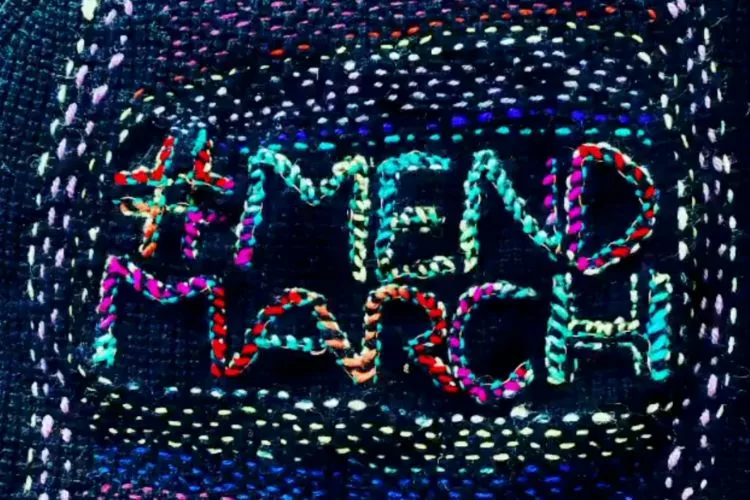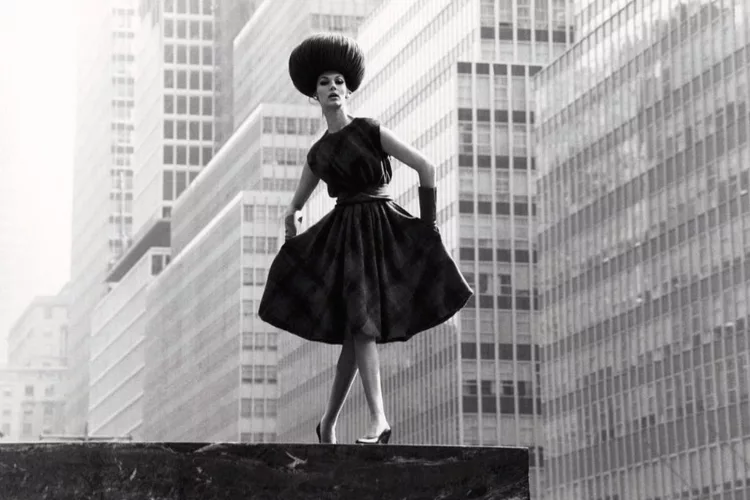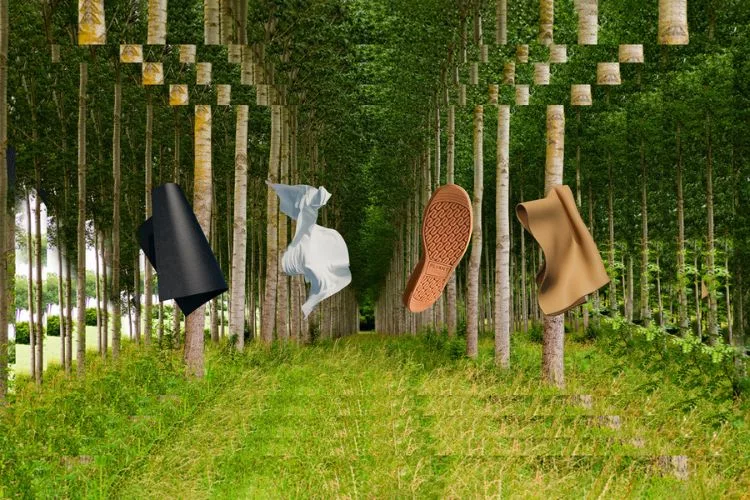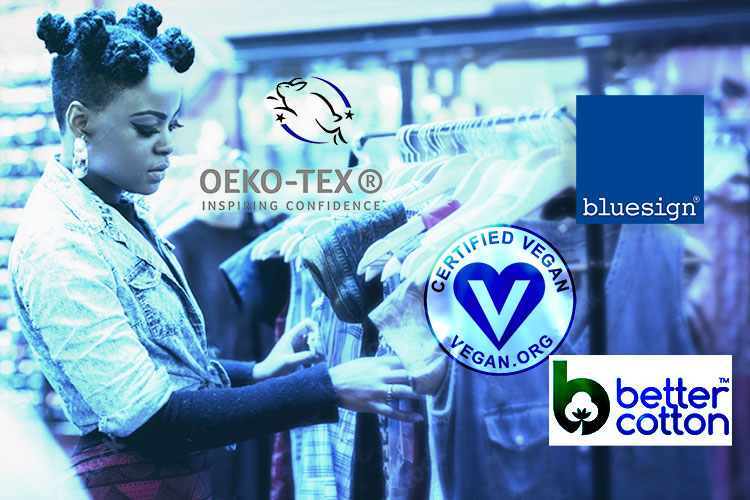The fashion industry wants us to point fingers at “bad fast fashion” when in truth if a brand is not circular they’re no better. Let me explain…
We all know fast fashion is bad and, especially if you’re past college age, it’s pretty easy to avoid the ones most talked about. Because, honestly at this point you’re probably not interested in what Shein, Brandy Melville or Forever 21 have to offer. But what about shopping at Target? Or Nordstrom? Or –let’s go big or go home– Balenciaga? I’ve come to the conclusion that it’s ALL as problematic as fast fashion and I’ll explain why.
But first, let’s look at a common definition of “fast fashion”. (And know there are variations on this theme but for this article, it’s how I’m defining it.)
Fast fashion is a design, manufacturing, and marketing method focused on rapidly producing high volumes of clothing. Frequently they copy runway trends but in low-quality materials (synthetic fabrics) in order to bring inexpensive styles to the consumer.
Here’s the thing: Almost All traditional fashion brands rapidly produce high volumes of clothing
While maybe not on the Shein level, any brand that you find in your upscale mall produces high volumes of clothing. For example, consider shopping at a mall anchor store like Nordstrom. I searched for men’s t-shirts on Nordstrom.com and there were over 15,000 results. Over fifteen THOUSAND men’s t-shirts on one shopping site.
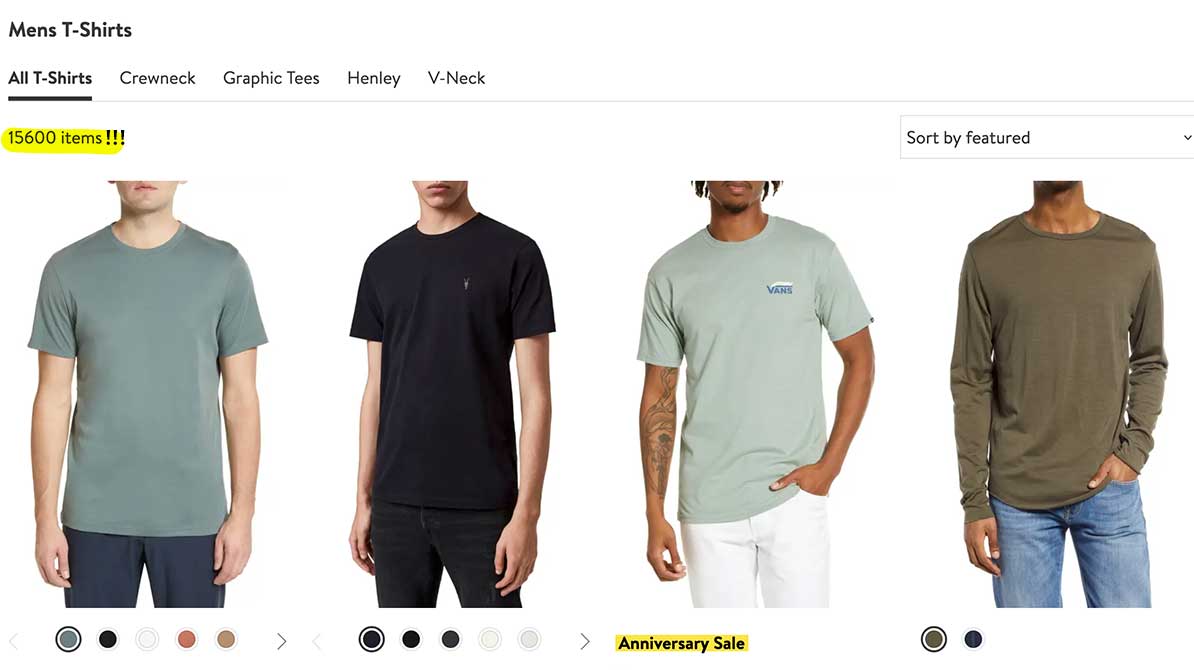
When you stop and think about it this is a weird way of going about production. I am sure it started with a bit of “supply and demand” logic but I think it’s become more of a “push it on the consumer to buy” logic. And because the cost for them to make it is so low, if they sell even half their inventory, they’re making a profit. That profit doesn’t take into account the resources being used to make the items or where the unsold clothing will end up. It just isn’t part of the equation.
This is part of the Take – Make – Waste production method and it’s damaging regardless of the brand or the price point. But before we dive into this and what the alternative is, let’s discuss the second part of that fast fashion definition.
FAST FASHION COPIES TRENDS WITH LOW-QUALITY MATERIALS
Traditional “fast fashion” is definitely guilty of copying the runway (hi, Zara!) and stealing original art and designs (I’m looking at you Forever 21, Shein, Urban Outfitters…and too many to count)
But let’s discuss the low-quality materials. One of the worst materials for the planet is polyester.
Quick refresher on WHY polyester and most synthetics should be avoided:
1. It is made with petroleum, a diminishing natural resource and the extraction of which is contributing to global warming.
2. It sheds microplastics -which by now you should know about but if not read the above link.
3. Recent new studies link it to cancer.
It would stand to reason that polyester would only be in cheap clothes.
Ha! So.Wrong.

Those men’s shirts from Nordstrom mentioned earlier? Many are a cotton-poly blend. Making easier care for you yet impossible to recycle so terrible for the planet.
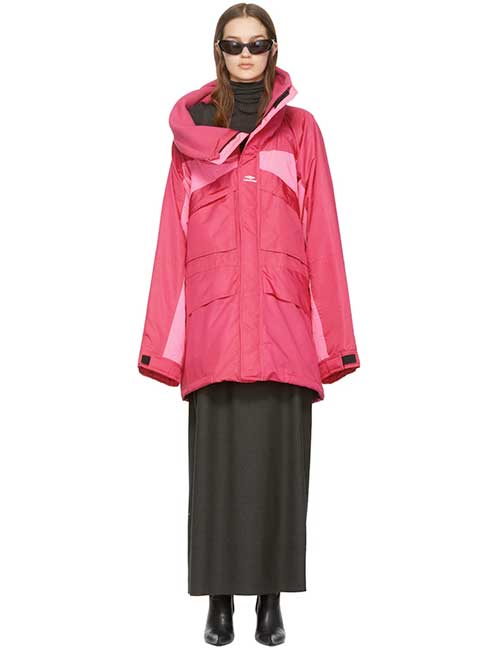
I know what you’re thinking.
Okay, but that’s for us average folks. Surely the high-end designers use only the best fabrics.
How about that Balenciaga? Well currently they’re selling an on-trend Barbie pink that is literally called “ Pink Polyester Coat” on SSENSE for a mere $3290.
Over $3k for a coat made 100% from a material linked to cancer?
File that under: funny not funny
Or just gross
Now that we’ve established what’s wrong, let’s talk about a way forward: Circular Fashion
What is Circular Fashion? Simply put: it’s fashion that takes into account the planet’s resources and how it will impact these resources before, during and after production.
We look to The Ellen MacArthur Foundation for more information. And specifically, their aptly titled report, Vision For A Circular Economy For Fashion which puts fashion into the context of a circular economy. A circular economy is a bigger idea than incrementally reducing the harm of our current model.
i.e., more than simply saying “reduce, reuse and recycle” –though that’s important too. It tackles the root causes of global challenges such as climate change, biodiversity loss, and pollution, while creating opportunities for better growth.
A Circular Economy is underpinned by three principles, all led by design: eliminate waste and pollution, keep products and materials in use, and regenerate natural systems.

For fashion to be considered circular fashion, it means ensuring that products are:
–Used more
–Made to be made again
–Made from safe and recycled or renewable inputs
These should be non-negotiable to you because the take-make-waste method has become a dangerous option. And if you think that’s an exaggeration, consider this stat:
According to the Global Footprint Network, “Humanity uses the equivalent of 1.5 planets to provide the resources we use and absorb our waste. This means it now takes the Earth one year and six months to regenerate what we use in a year.
Moderate UN scenarios suggest that if current population and consumption trends continue, by the 2030s, we will need the equivalent of two Earths to support us. Last time I checked, there’s only one. Or as the activists like to say: there’s no Planet B.
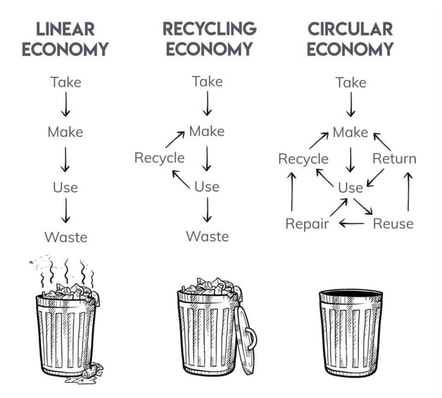
Turning resources into waste faster than waste can be turned back into resources puts us in global ecological overshoot, depleting the very resources on which human life and biodiversity depend.
Let’s repeat the last part for those who checked their messages while reading: Turning resources into waste faster than waste can be turned back into resources puts us in global ecological overshoot, depleting the very resources on which human life and biodiversity depend.
…and what exactly do you think fashion over production does? Yes, again, ecological overshoot.
And so, it follows that if traditional fashion systems are over producing, they’re creating more waste than resources (especially when they use synthetic fabrics that don’t go away).
How can we shift away from the over-consuming / planet destroying model?
Ultimately, that’s on the brands to change their ways but if everyone simply stopped buying their shit it would happen. This is what we recommend at No Kill Mag
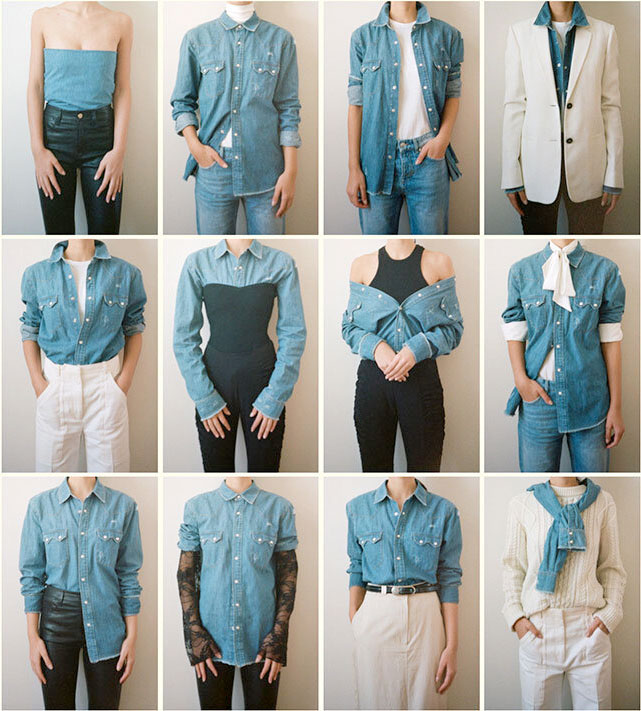
Buy Less + Style More
I’m personally doing the #nonewclotheschallenge that challenges you to buy nothing new for a year. But you don’t need to take a challenge. Just get rid of those impulse buys. This goes beyond fashion to all aspects of your life.
Use 30 wears app as a fun way to keep track of what’s in your closet and favorite outfits. or get a styling appointment with LotteV –a styling service that works with what you already own.
Buy Secondhand
It saves current items from ending up in a landfill or worse. There are so many options online and in person. Never thrifted? Look for thrifting tours to get your started.
Alternatively try clothing swaps!
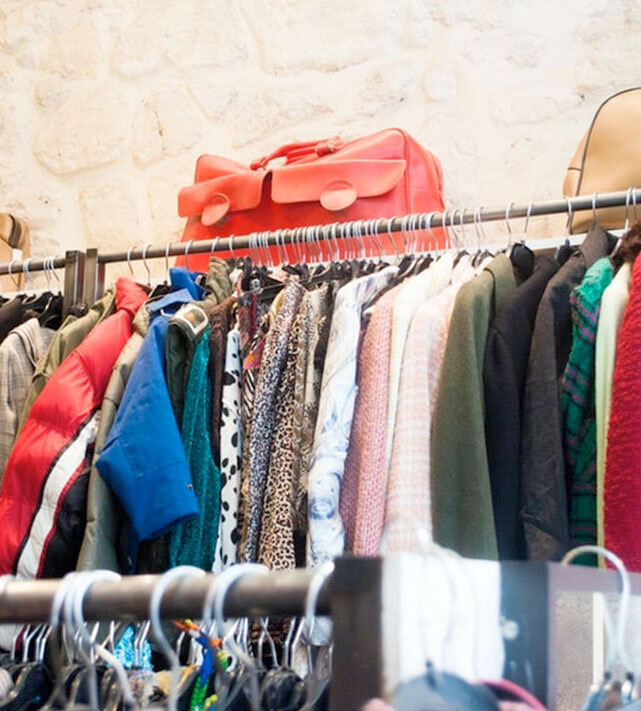
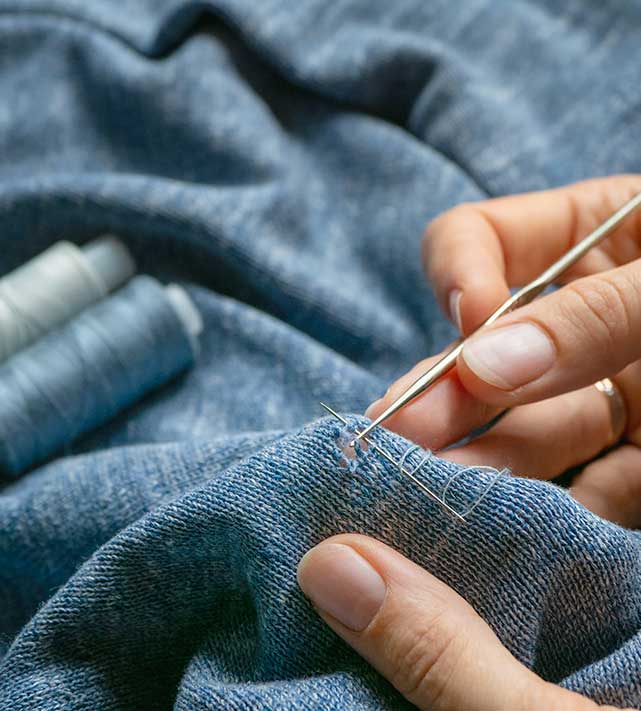
Repair What You Own
Learn basic sewing hacks or take things to a tailor.
Research Which Companies Are Innovating And Support Them
A good resource is of course, No Kill Mag! Read our articles on regenerative fashion, fossil free activewear and Ganni’s collaboration. These are just some of the brands we feature that are moving out of the take – make – waste model. Also keep an eye on new materials like plant based “leather”.
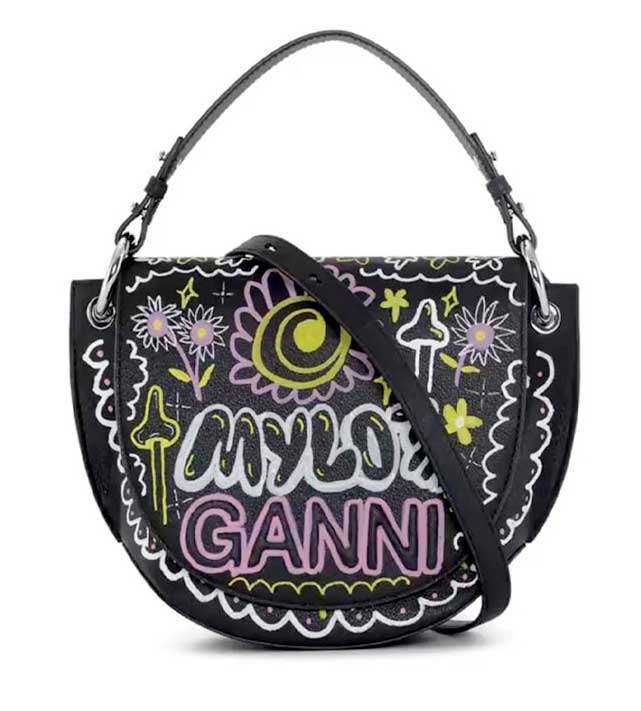
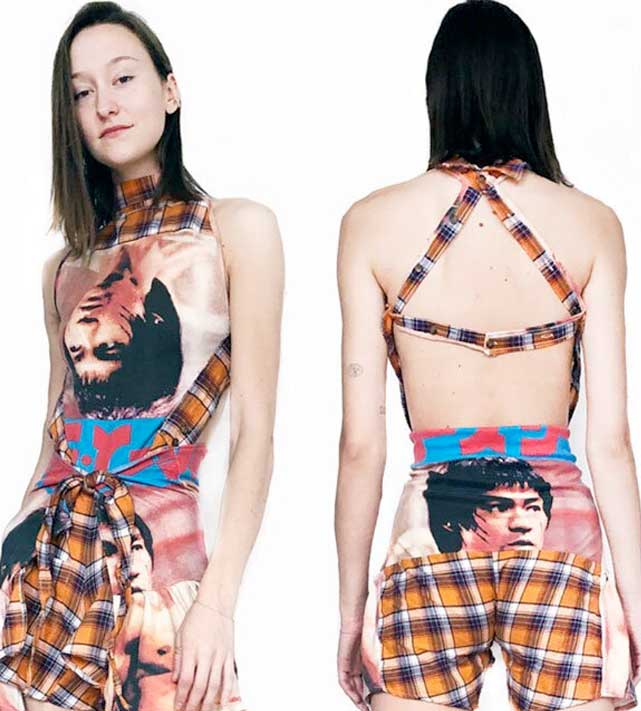
Consider Custom Made Clothes
I truly believe custom clothes will be key in the future. It’s a way to create a true relationship to what you own.Unspun is doing this with denim. And Gen Z seems to be getting this faster than the rest of us. There are the corset makers like Kristin Mallison but also young knitwear designers and Depop upcyclers who remake what already exists. I particularly love Janelle Abbott’s Wardrobe Therapy and see this as a model for young designers across the country to adapt.
When you start thinking of alternatives instead of looking at no fast fashion as a personal deprivation things start to open up and get exciting.
The fact of the matter is just because Condé Nast is in bed with Bezos doesn’t mean we have to be. We have options. Trends have long been known to start from the bottom up, in the streets. Why can’t we change the way things are produced by changing our shopping habits instead of waiting for brands to do the right thing?
–Katya Moorman
Related Articles
Upcycling is IN, buying new is OUT: Dan Pontarlier transformation
How you’ll buy, use and sell clothes in a circular economy
Circular Denim: What it is, why it’s important and where to find it.
Sustainable Haute Couture Designers We’re Watching
Six Changes You Can Make To Slow Climate Change
Customize Your Fashion Journey: Check Out These 17 Made-to-Order Brands on Instagram and Depop



